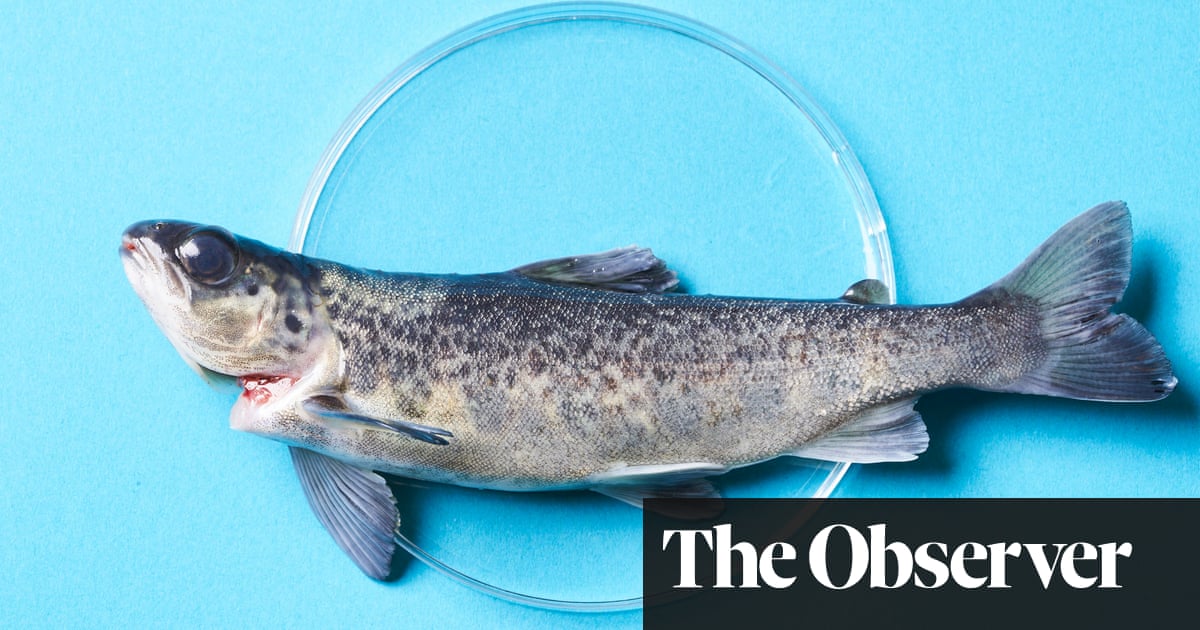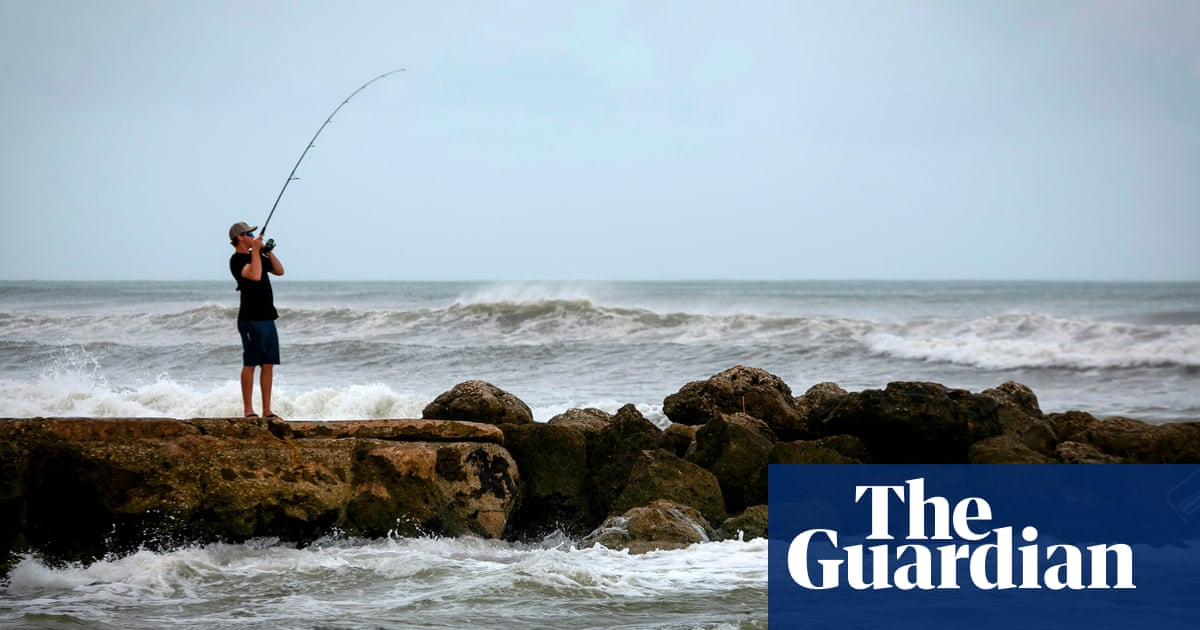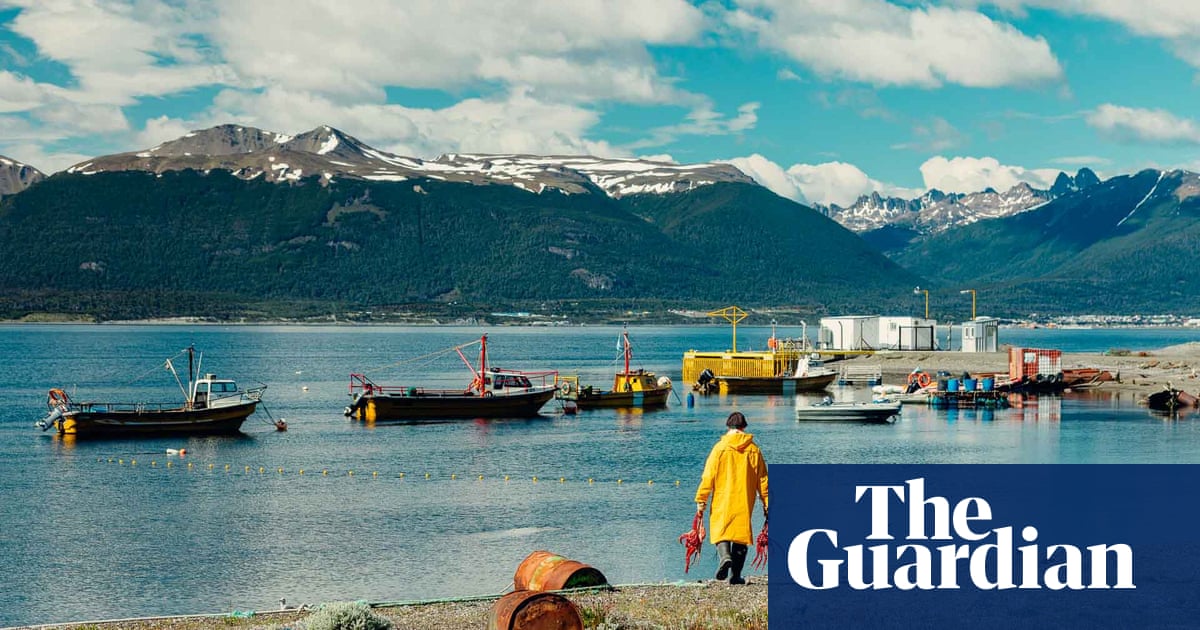The redbrick offices, just north of Hamburg’s River Elbe and a few floors below Carlsberg’s German headquarters, are an unexpectedly low-key setting for a food team gearing up to produce Europe’s first tonne of lab-grown fish.
But inside Bluu Seafood, past the slick open-plan coffee and cake bar, the rooms are dominated by gleaming white tiles, people bustling about in lab coats, rows of broad-bottomed beakers and pieces of equipment more at home in a science-fiction thriller. A 50-litre tank (a bioreactor) is filled with what looks like a cherry-coloured energy drink. The liquid, known as “growth medium”, is rich with sugars, minerals, amino acids and proteins designed to give the fish cells that are added to it the boost they need to multiply by the million.
The aim is to one day sell the resulting product – which will be actual fish rather than a plant-based substitute – to shoppers as a more environmentally friendly alternative to depleting the sea in order to meet demand.
“With cultivated fish, you can also maintain the same nutritional benefits, like the omegas, but without the possible allergens, microplastics, or other contamination,” says Seren Kell, science and technology manager at the Good Food Institute (GFI).
The fish grown in the bioreactor is then mixed with plant-based ingredients to make fish balls and breaded fingers.
At this early stage, the company’s first planned destination for its products is not the local restaurants but Singapore, a country where cultivated meat is already so well known, you can chat to taxi drivers about it, says Bluu Seafood co-founder and marine biologist, Sebastian Rakers.
“When we told our taxi driver that we were working on cultivated fish, he said ‘I know that, it’s the future. Many chefs would like to put it on the menu here.’”
Singapore is committed to reducing its reliance on food imports. Lab-grown fish and meat are part of a national strategy to locally and sustainably produce 30% of the country’s food by 2030. That plan, says Rakers, is “on everyone’s lips”.
Lab-grown chicken can already be found in select quantities on restaurant menus in Singapore and America, with other types of meat expected soon. But while trends suggest many people are switching away from meat, the perceived health benefits of fish could be an advantage for lab-grown producers.
“Fish has a ‘health halo’,” says Kell. “But there is a growing awareness that seafood is not sustainable. In the EU there is certainly a question over diminishing fish stocks, and cultivated seafood could benefit from that.”
A recent report from the UN’s Food and Agriculture Organization estimates there is a 28m-tonne gap between how much seafood people want and what can be supplied. One sign of a serious search for an alternative source of production, adds Kell, is a major EU research project called Feasts, funded by the Horizon programme, that included cultivated fish research in its latest €7m (£6m) funding offer.
The type of lab-grown product will matter too, with items such as fish balls, fingers or nuggets a better bet for making it to mass markets, says Hanna Tuomisto, a sustainable food systems professor at the Helsinki Institute, who studies cellular agriculture. Because of their cellular mix, whole pieces of lab-grown meat and “finless fish” are more complex and therefore more costly to produce.
“A chicken nugget, with undifferentiated cells, is easier to produce than the more complicated and time-consuming process of producing a whole piece of cultivated meat or fish that needs muscle and fat cells,” she says.
A clear advantage to bringing manufactured fish to the market over meat, is a potentially narrow price gap between the lab grown product and the real thing.
“If the holy grail is to match price parity with conventional animal products, then there is a narrower gap for say tuna or salmon [than for cultivated chicken],” says Kell.
Last year, a tasting menu allowing diners to try cultivated chicken at Washington DC’s China Chilcano restaurant cost $70 (£56), compared with a Peruvian-style roasted organic whole chicken at $44. In US supermarkets, you pay about $4 (£3.20) for a pound of traditional chicken. Bluu Seafood estimates a portion of its fish balls will cost about $20 in restaurants, compared with $15 for the regular version.
Price gaps may be even narrower for pieces of whole salmon, says Justin Kolbeck, CEO and co-founder of Wildtype, a cultivated-seafood producer hoping to receive US regulatory sales approval soon. “Salmon is at least $10 [a pound] and prices for premium salmon can exceed $80. That’s one reason I think the economics are different for cultivated fish.” He declined to go into detail about possible prices for his products.
A crucial factor in whether or not cultivated fish takes off is public appetite for it. An unscientific poll on the street near Bluu Seafood’s Hamburg headquarters suggested not everyone was in favour, although most people were positive. “Yes, I would try it, at least once,” says a woman in her 20s. However, another says she “would not pay for lab-grown fish if it was half the price”. She expressed a concern, which may be insurmountable for some, over the comparatively untested nature of cell-based products.
A more precise 2023 consumer study in Japan, the world’s fifth largest seafood consumer, found about 88% of respondents would be unwilling to pay a higher price for cell-based seafood. The other 12% said they would be prepared to pay more, and, of those, about 8% said they would pay “a much higher price”. They will soon have the opportunity to make that choice with one company promising to begin selling lab-grown eel in Japan by 2026.
The same study found that willingness to pay more was determined by an understanding, or not, of lab-grown foods. Those already aware of cell-based seafood “were over 14 times more likely to agree to pay a higher price”, it said.
Rakers had consumer awareness in mind when he made the decision to launch in Singapore. “It’s nice to have your product in a place where people understand it, where people are ready to buy,” he says.
However, it may simply be the novelty that gets people to part with their money in the first instance. As Prof Tuomisto says: “I would probably pay anything just to try it.”
The prospect of his product one day leapfrogging other cultivated meats to supermarket shelves is not impossible, Rakers says, but not just because it’s better for the ocean, fish populations and free of contaminants.
“Fish have a much higher regeneration capacity than mammals,” he says. “Up to 70% of lost tissue can be fully regenerated.” They can even regrow inner organs, he says. To be able to fully regenerate, fish need to reproduce cells and recruit cells quickly to cover wounds. “That is a real advantage for us. It means we can get more activated cells faster. We think we can hit an industrial level of fish cell production by 2026 or 2027.”
Because the cells Rakers and his team produce will be mixed with seasoning and other plant-based proteins to make fish balls, fingers and other products, the final food volumes will be higher than the cell output. But Rakers says the aim is to keep the fish cell ratio as high as possible. “The more cultivated fish meat we add, the cleaner our ingredient list. It’s not like plant-based fish, where you have to mimic fish. It is fish.”



